Page 27 of 39
Re: The "Retired" 510
Posted: Fri Nov 24, 2017 4:29 pm
by noflers
Re: The "Retired" 510
Posted: Fri Nov 24, 2017 5:46 pm
by Indy510
Wow that's a big hole... . maybe someone was trying to run an aftermarket temp. gauge. ... It looks like a S14 manifold, because there's no butterfly valves. I hear people use the S14 upper and S13 lower manifold, if it's going on a S13 motor/wiring.
Re: The "Retired" 510
Posted: Fri Nov 24, 2017 6:55 pm
by noflers
Yeah, I was told it's for an after market temp sensor. But there's better places for that... Oh well.
Re: The "Retired" 510
Posted: Sat Nov 25, 2017 8:46 am
by noflers
The pcv house routing was something cluttering the underside of the manifold, before. I removed the contraption and plugged where they connect to the manifold. Pcv will vent to atmosphere, or to a catch can along with the valve cover breather. Just need a good spot for that.
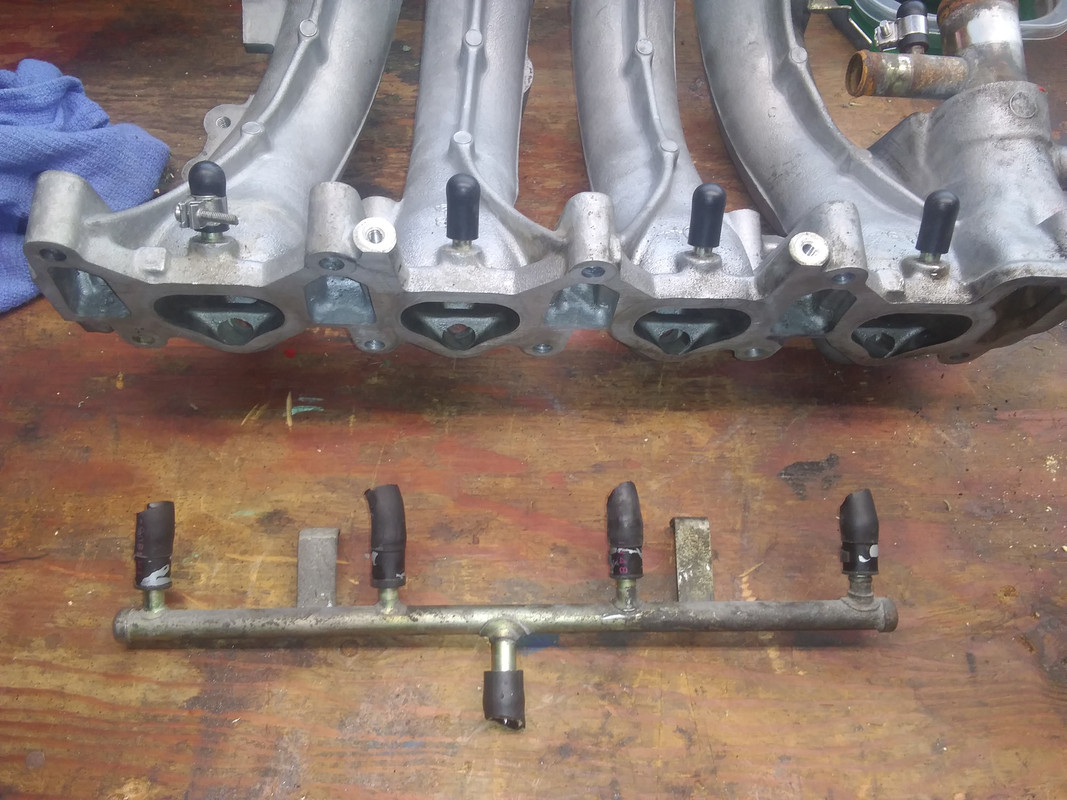
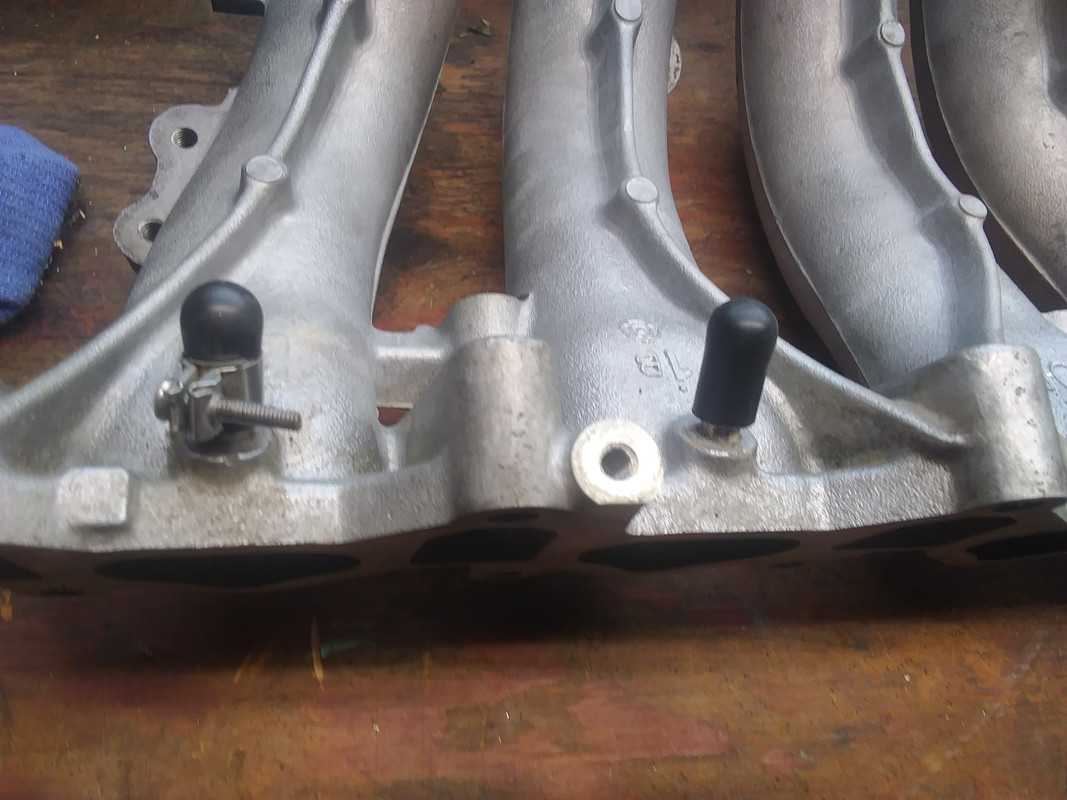
I decided I want to start fresh with my rear crossmember. Its got slotted holes but it looks like they were done on the car with a hand drill. And all 4 brackets are slotted, making even a rough alignment difficult. My car will never see extreme lows so I think I'm willing to accept a bit of extra camber until a decent adjustable bracket can be installed. So, I'm on the hunt for an unmodified, or tastefully modded, rear crossmember. And new ateering knuckles.
Re: The "Retired" 510
Posted: Sun Nov 26, 2017 1:52 am
by Laecaon
I would have left that. I like vacuum being pulled on the crank case.
Re: The "Retired" 510
Posted: Sun Nov 26, 2017 7:22 am
by noflers
But the vacuum only gets pulled when the pressure on the inside of the crank case opens the pcv, right?
Re: The "Retired" 510
Posted: Sun Nov 26, 2017 8:12 am
by DRIVEN
The secondary purpose of a PCV system is to help keep pressure to a minimum. Pressure causes leaks. Crankcase should ideally be under a very slight vacuum pulling from a filtered source.
Re: The "Retired" 510
Posted: Sun Nov 26, 2017 8:39 am
by noflers
Excuse me, but I still don't see the vac as necessary.
Pressure in the crank case builds a bit, so the pcv opens. The pcv has a house from the intake manifold to assist in pulling the gasses, but this doesn't put vacuum on the crank case because the valve closes before any real vacuum is pulled (as in negative pressure in the crank case), because the valve closes as soon as the positive crank case pressure falls below a certain point.
Sorry, I don't mean to argue with someone that knows what they're talking about, but it's still not fitting together in my head.
Re: The "Retired" 510
Posted: Sun Nov 26, 2017 9:14 am
by DRIVEN
It's your build and you can do it however you want. Jacob and I were just commenting on our preferences. The PCV has 3 basic functions:
1. Emissions; to keep blowby vapor out of the atmosphere by recirculating it through the intake and burning it.
2. To burn off moisture and acids that accumulate in the engine from warming and cooling condensation.
3. To "vent" blowby pressure in the crankcase in an effort to control gasket and seal leakage.
Another thing to consider is that as PCV is a metered vacuum leak in the fuel delivery calibration. This can be illustrated on a carbureted engine by removing the PCV from the hose -- lean condition. Now plug the hose -- rich condition. EFI will compensate to a degree but the factory mapping is written with PCV intact.
Not all engines have a traditional PCV. The Quad4 in my wagon has a vapor separator on the side of the block that is essentially a self draining catchcan. Volvo used a perforated plug for decades then went to a vapor separator. Even though there are different ways to accomplish the same task, they all pull a little vacuum to facilitate airflow. You certainly don't have to though. Old flatheads and Stovebolts just had a breather or draft tube. They also suffered from oil consumption issues, leaked oil, and needed rebuilds every 30,000 miles.
Re: The "Retired" 510
Posted: Sun Nov 26, 2017 9:22 am
by wayno
Before the PCV valve was put on engines a 100,000 miles on an engine was rare/a milestone, now they go 300,000 miles all the time.
Also oil don't last, now days you can get 6000 miles or more before an oil change although I only go 3000/4000 miles myself, well back before the PCV valve 3000 miles is a lot of miles for that moisture contaminated wore out filthy oil.
I suspect you never pulled apart an engine that never had a PCV valve, it is an awful job, sometimes build up can be an inch thick on everything, this brownish paste on everything, I suspect it is the reason Hot-tanking blocks was invented, nobody wanted to work on them unless they were clean.
As far as I know the PCV valve doesn't effect performance yet it does a great job keeping things clean, and clean things function better, imagine one day in the future you want to adjust your valves and you take off the valve cover and find everything covered in this brownish paste that sticks to everything that touches it, it sorta looks like the head gasket blown, you know when the head gasket is blown and water gets in the oil, that is the color the paste is.
Re: The "Retired" 510
Posted: Sun Nov 26, 2017 9:29 am
by noflers
I guess the only thing I didn't consider was whether ork not the pcv can open without the vac assist. Or if it will take to much positive pressure to open it.
I wasn't meaning to attack either of your preferences. More trying to dig into the actual theory behind it.
And the main reason I did it was for ease of access later. It'll make getting to things under there that much easier, even installing/removing the manifold will be a tiny bit easier now.
To be clear, I WILL still have a pcv. It just wont be hooked up to the intake manifold.
Re: The "Retired" 510
Posted: Sun Nov 26, 2017 10:17 am
by Indy510
A lot of people block off those holes on KA's ... I drilled/tapped each hole, after knocking out the metal sleeves, and ran the crank-case breather to an oil catch can.
Re: The "Retired" 510
Posted: Sun Nov 26, 2017 1:07 pm
by DRIVEN
You're fine, I don't think anyone felt attacked.
To answer your question (I think), the vacuum side of a traditional PCV is more responsible for it being open than any crankcase pressure. Here's an example; If your engine has a PCV which has vacuum on one side and is installed in the valve cover and a breather somewhere in the system (like every engine should), that vacuum is pulling all the vapor out of the crankcase with the breather acting as a fresh air inlet. That's why breathers are generally plumbed into an air filter or intake tube. If you were to remove the vacuum source from the PCV then it essentially becomes a spring loaded pressure relief valve. The problem is, the breather has less restriction so all of the blowby just goes out the breather. Path of least resistance causes the system to breath backwards.
Make sense? I may not have explained it very well.
Re: The "Retired" 510
Posted: Sun Nov 26, 2017 3:00 pm
by wayno
Lets get back to basics, our 70s engines have a PCV valve and a breather in the valve cover, the PCV valve is like the house keeper, every time you start the engine the PCV cleans the measured amount of air it sucks in, it is a very slow air leak in the big picture, it slowly does its job in the background.
The breather is mandatory, you have to have an unrestricted breather that has no type of valve and here is why, on most engines at an idle if you take the oil filler cap off you will feel air blowing out of the hole, sometimes a lot of air, this is why they generally pipe it to the air filter assembly, that air goes thru the engine, but when you give it the gas that oil fill hole sucks in air, sometimes a lot of air, yet again why you want it piped to the air filter assembly, it draws in filtered air, if you put your hand over the valve cover hole you will feel it sucking on your hand when you rev the engine.
OK, you can delete the PCV valve and the breather will act exactly the same, at an idle blowing out, revving it sucks in, so lets say you deleted the PCV valve, the most common thing to do is cap the engine case pipe which is fine as long as you have the unrestricted breather on the valve cover, if you were to put one of them small filters on the valve cover vent, eventually it will get saturated with oil and start dripping on the valve cover or on whatever that filter is above, if it is piped to the carb the inside of the air filter housing can get oily.
Lets say the engine has a PCV valve, and the valve cover vent is deleted, some may think that the PCV valve can take and do the job of the valve cover breather, the PCV valve only sucks a small measured amount of air in, the rest of the engine blow by has to go somewhere as the breather has been blocked to make the engine compartment cleaner looking, well it will now blow out the oil dipstick hole, it also will suck into the oil dipstick tube when you rev the engine as the PCV valve is a one way valve, when you have a vacuum it sucks in, but if the engine backfires or the air flow tries to reverse it slams shut.
Now if one has a real good rubber seal on the dipstick, and air and oil cannot enter and exit thru the dipstick tube, and the valve cover vent has been deleted(it doesn't matter if you have a functioning PCV valve), then the block cannot breath, the inside of the block will either have pressure building up, or it will have vacuum building up, there will be nowhere for this air to go as the dipstick tube has a good rubber seal, the gaskets on the engine will start to leak, the valve cover, oil pan, rear seal, front seal, anywhere it can make a hole to release the blow by and vacuum pressures inside the block is where it will start leaking, eventually it will start leaking oil everywhere.
The engine case vent can be used as the breather, but as it is lower in the block when it blows out it will likely have more oil coming out compared to the valve cover being the vent, when it is used as the vent the PCV valve will not likely work properly, so there is no reason to have one unless the PVC is piped to the block somewhere else.
Re: The "Retired" 510
Posted: Sun Nov 26, 2017 6:43 pm
by noflers
Pulled the lower manifold to get started on it. Already got rid of the vacuum/coolant line gallery. Only pulling vacuum for the FPR and IACV. The space is wide open in there now. Tomorrow I should put it back together.
Then I can get started on something else

.
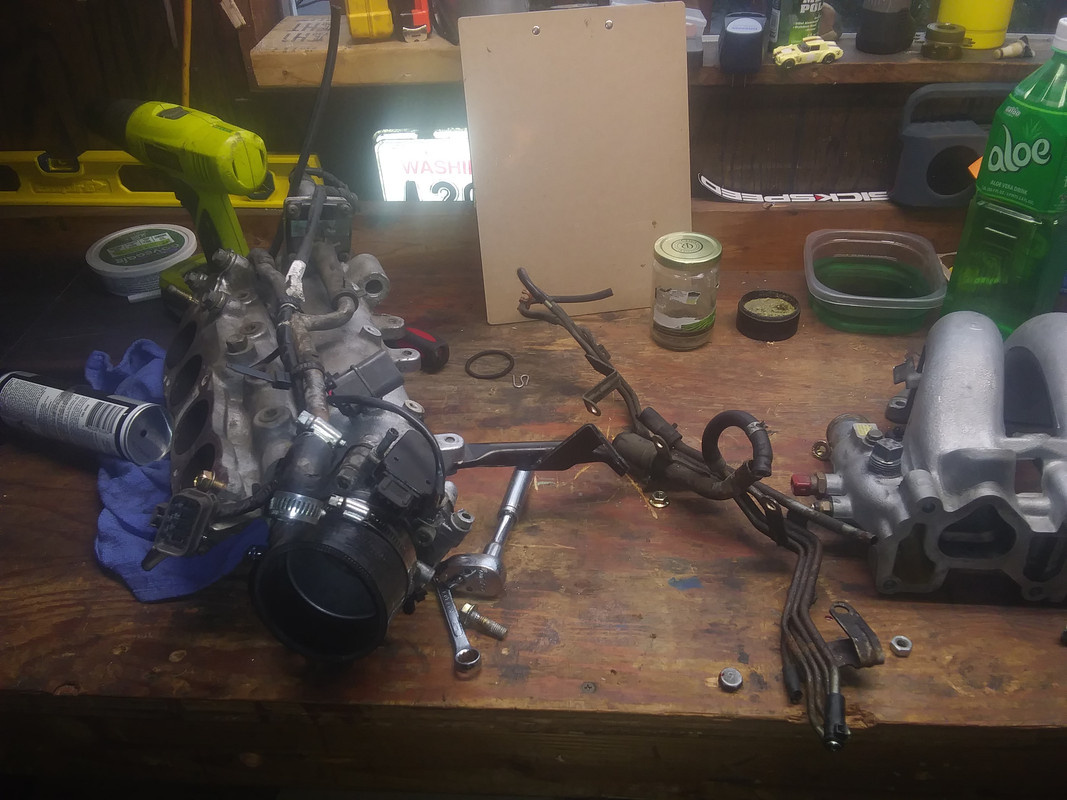
I've got a lead on some steering knuckles and a hood in Portland. Hoping to pick them up soon.
Re: The "Retired" 510
Posted: Sun Nov 26, 2017 7:08 pm
by DRIVEN
Clean is simple. Simple is good.
Re: The "Retired" 510
Posted: Mon Nov 27, 2017 7:37 pm
by noflers
Got the intake reinstalled. Totally pain free compared to before. I didn't even have to use wobble elbow thing to reach any bolts.
Indy, you're absolutely insane to shave and polish that thing. Kudos, seriously.
I might have just ordered a rear sway bar kit...
And some shiny interior bits

Re: The "Retired" 510
Posted: Mon Nov 27, 2017 8:17 pm
by DRIVEN
Indy fears no challenge.
Re: The "Retired" 510
Posted: Wed Nov 29, 2017 6:03 pm
by noflers
Went to buy a hood today and found out the guy had a few more things I want/need.
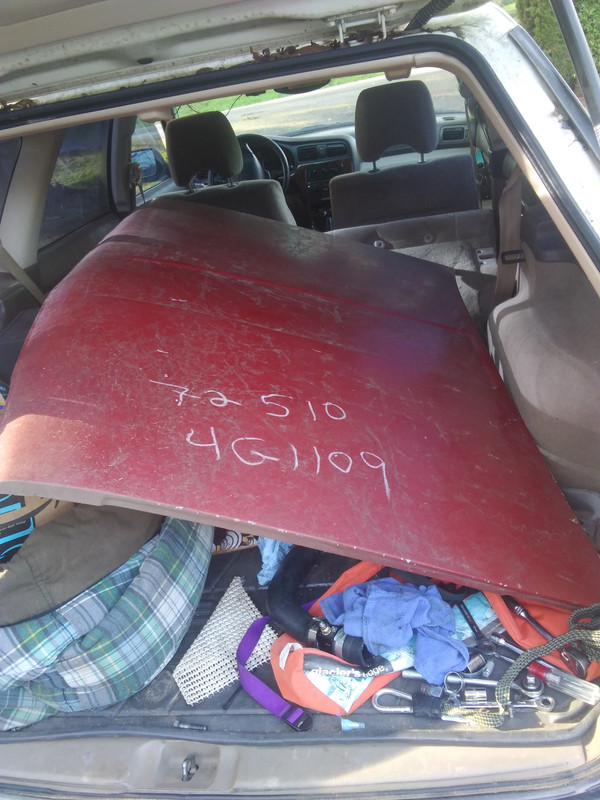
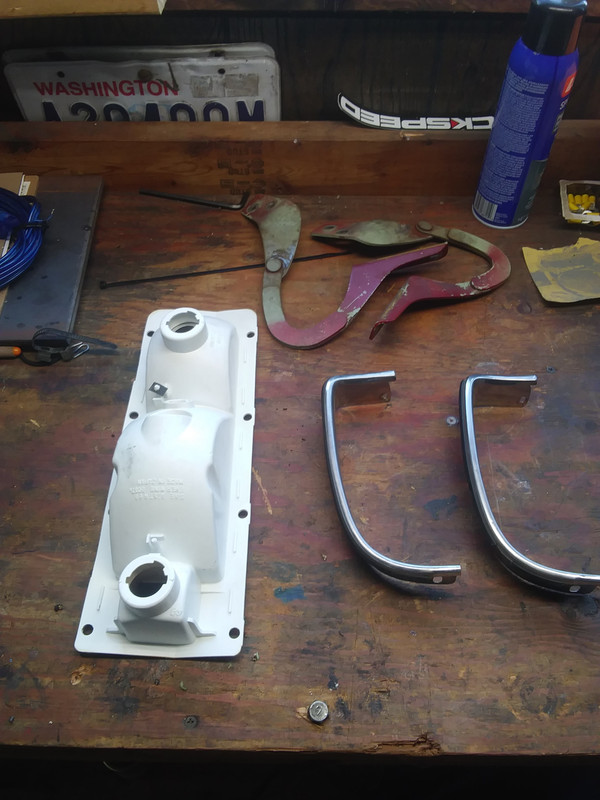
Re: The "Retired" 510
Posted: Wed Nov 29, 2017 6:08 pm
by DRIVEN
Those eyebrows are really nice.


